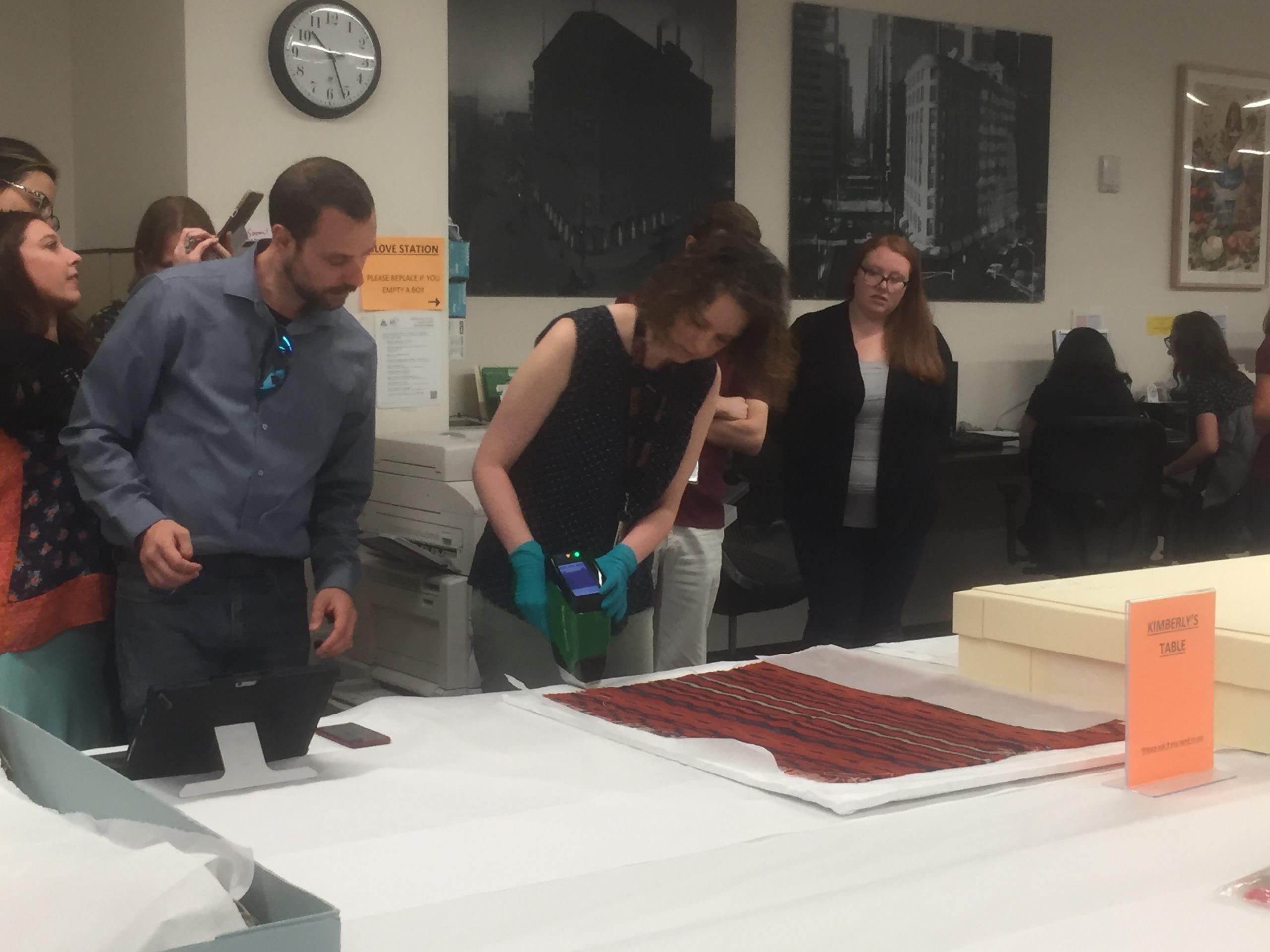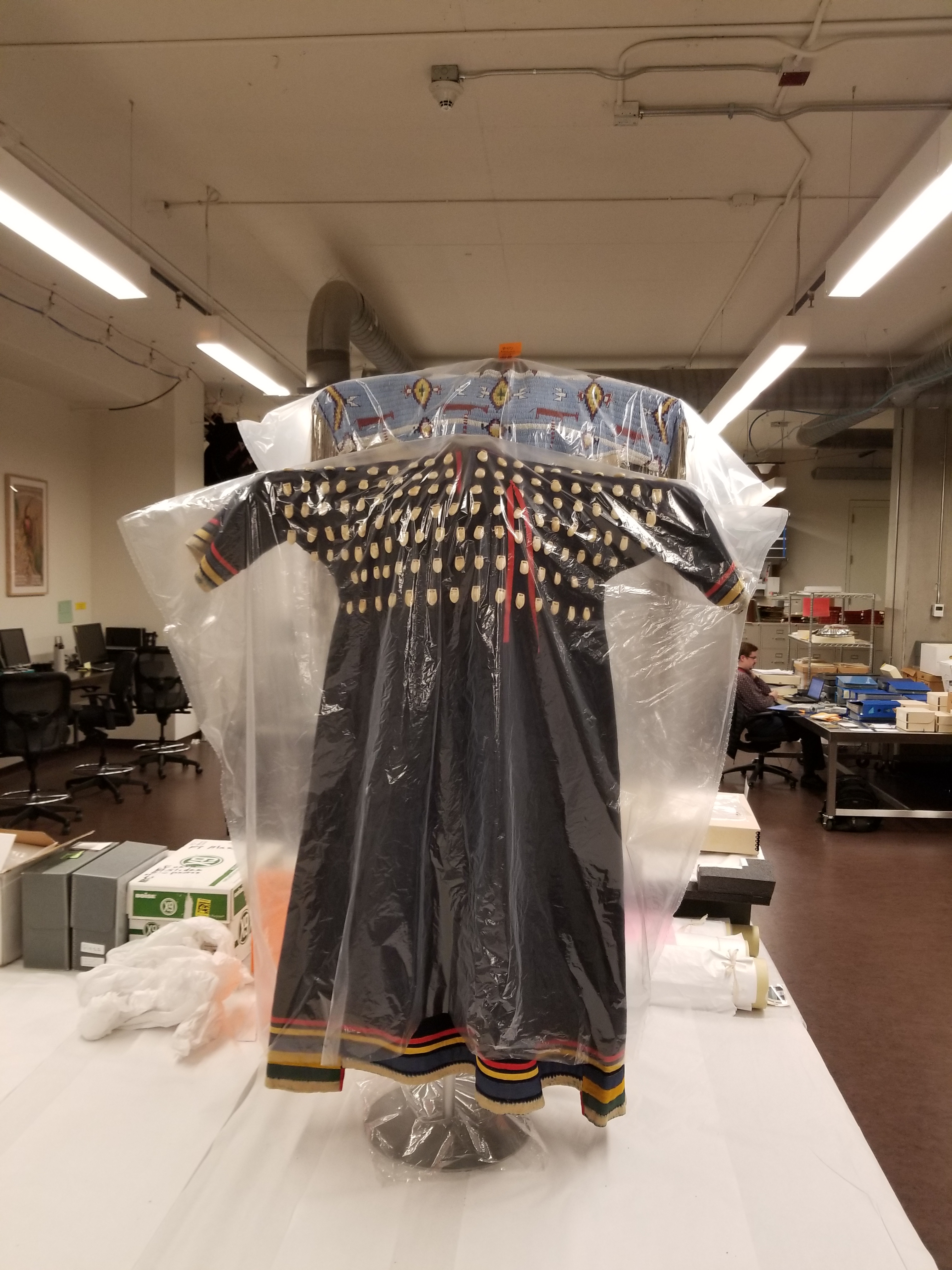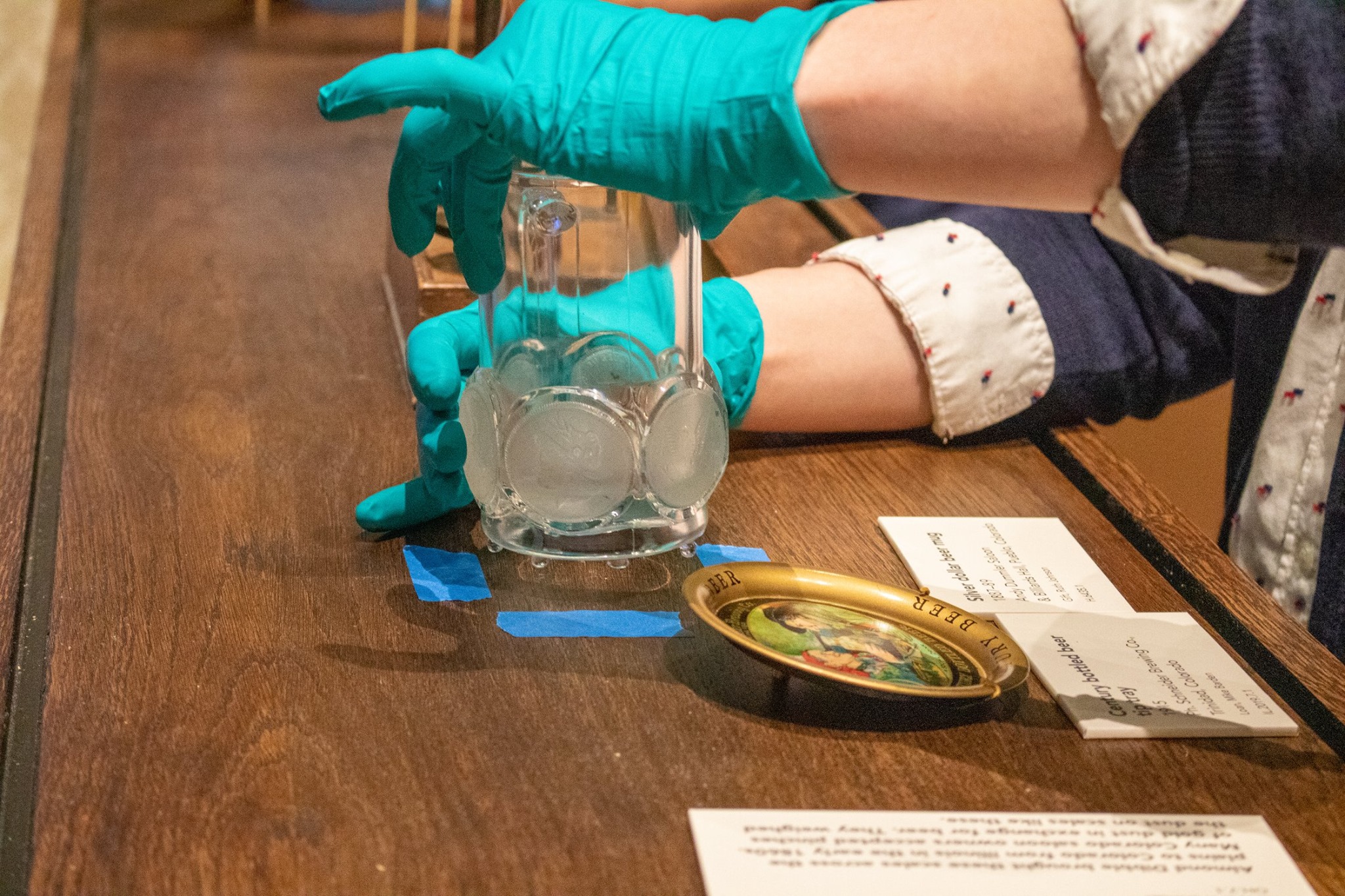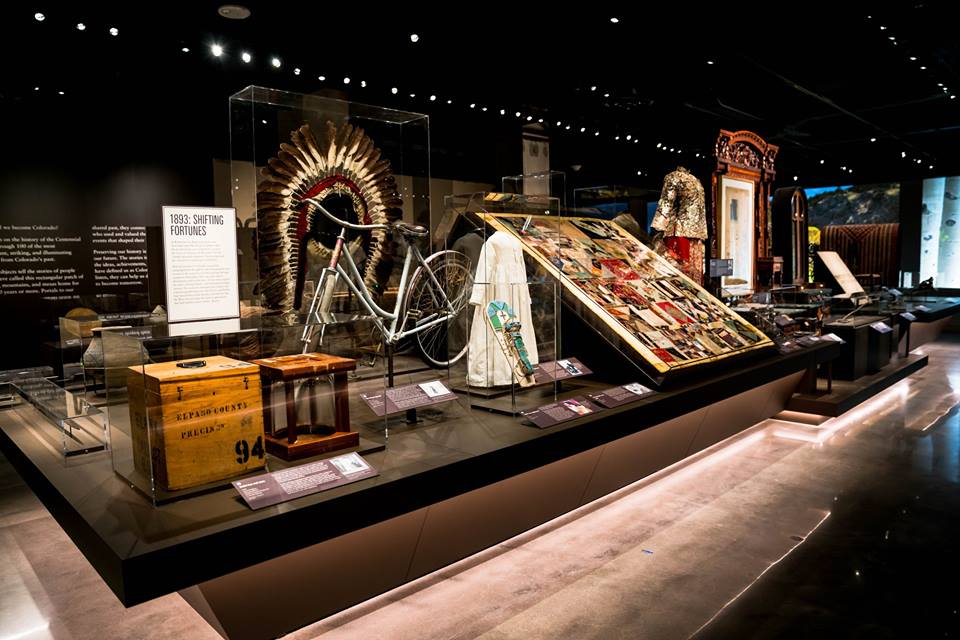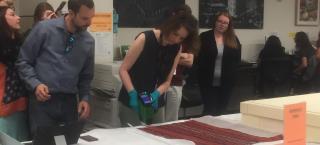
Story
Collections on View at the Center
Recently, I was able to give a Lunch and Learn style presentation to my fellow History Colorado colleagues about my work and what it takes to put an object on view at the Center. I thought it might be fun to share with all of our audiences to give them a behind-the-scenes look at what Collections and Conservation work at the Center look like.
My job title is Exhibits and Loan Registrar and unlike other museum professions it isn’t a job that is frequently known to the public. I work within the Curatorial Services and Collections Access (CSCA) department in the office of Collections Management and Registration (CM&R). CSCA’s mission is to “Collect, preserve, study, share, collaborate, stimulate appreciation for, and advance knowledge of Colorado history - all in service of patrons and in accordance with the highest professional standards.” Our patrons include my fellow coworkers as well as public and we believe that everyone has the ability to access our collections in a variety of ways.
As a Registrar I make collections accessible by putting them in exhibits at the Center. I work with multiple teams within History Colorado to make sure all of the objects on view are presented safely, securely, with deterioration kept to a minimum. The final product of an exhibit with objects is only one step in many during the lifecyle of an object scheduled for display.
A typical lifecycle involves the following steps:
- Exhibit team research
- Curatorial review
- Assessment by Registrar
- Conservation
- Photography
- Mount-making and mannequin construction
- Installation
- Rotation
- De-installation and return to storage
Curators and exhibit developers come up with the themes of an exhibit and the curator scours the collection to find the right objects for that show. During that process a curator decides whether or not an object is sound enough for display and whether or not it will need conservation. This typically happens 12 months before an exhibit opens. Once an object makes it way to the final exhibit list, I work with the curator to assess the objects eligible for conservation to see which objects need the most work to make them stable for display.
Once those objects are selected, I reach out to conservators to see what work they propose to be done to clean, repair, stabilize, or mount an object. Sometimes, an object is identified as hazardous and needs to be tested. In the 1960s and 70s, objects made of organic materials like leather and feathers were treated with pesticides! Now, of course, we know that pesticides are extremely dangerous so for objects that are identified as receiving that treatment, we test to make sure that anyone handling the object is safe. Most recently, History Colorado tested several items for the Written on the Land exhibit so that our conservators would know whether or not they needed to wear special protective gear when working on them.
After photography, mounts are made by the History Colorado preparator. During this time, 4 months to 2 weeks prior to opening, I work with the preparator and other design staff to make sure that all objects on display are safe. Sometimes this means placing objects out of the reach of visitors if they are out in the air. Other times it means figuring out the strongest areas of an object to secure the mount to. Mannequins are also constructed during this time. I will sometimes be called upon to put my sewing skills to use and make mannequins. I will create extra padding, carve away areas, and sew on finishing fabric to make a mannequin look as good as possible. A good mannequin will show off the clothes and not draw attention to how the object is displayed.
Objects are installed about three weeks prior to the exhibit opening. I will spend all day in the gallery working with the Design and Productions staff to install the objects. Rather than bring all the objects up at once, we design on an installation schedule that outlines when different cases are being installed. Depending on the size or complexity of an object, it may get install first or last. Exhibits are rarely installed in the order that the visitor experiences them. Then finally the exhibit opens! But work on the objects on view isn’t done after opening. I will continue to check up on the objects and will schedule when other objects need to be swapped out to help prevent further degradation. I continue to work with different team members to ensure the safety and care of objects whether the show is 4 months long or 5 years long.
When visiting an exhibit at the Center or at any of the other museum within History Colorado, take a look at the way an object is displayed. Is it on a mannequin or flat? Does it appear to hang off a strap? Taking a different look at an object on view may give you an insight into the important work that myself and others do to make the visitor experience as enjoyable as possible.


